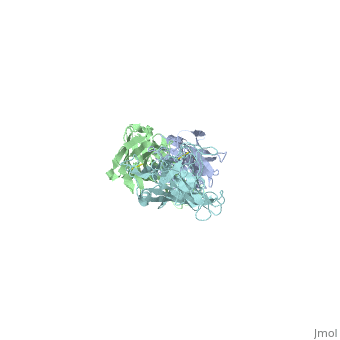G1SecL05
BackgroundBackground
Lyme disease, discovered in 1975[1], is a vector--borne disease caused by the inoculation of spirochete Borrelia into the skin by members of hard bodied ticks of the family Ixodidae. Symptoms include arthritis at major joints, neurological problems such as reduced memory and poor ability to concentrate, and characteristic lesions erythema migans, more commonly known as the bull’s eye rash. A major outer surface membrane protein of Borrelia, ospA, plays a key role in immunity against Lyme disease through its binding to the antibody LA-2 fab.
Development of the recombinant vaccineDevelopment of the recombinant vaccine
Initial approaches for vaccines to treat lyme disease solely focused on ospA after studies involving passive immunization in mice. Studies indicated that passive immunization in mice only occurred if the blood from humans infected with Lyme disease contained anti-ospA monoclonal antibodies[2]. Although ospA vaccines, such as Lymerix, were able to halt transmission of the spirochetes, they were immediately pulled from the market due to chronic side effects such as severe arthritis. Additionally, quantitative analysis of immune response[3] of the whole ospA indicated that it is not predictive of protection.
Recent developments in vaccines against Lyme Borreliosis emphasize the need to utilize the LA-2 –ospA complex on the basis that it, as a result of its specificity, induces long- term immune response in mice during previously studied clinical trials. Passive immunization of mice that resulted with significant titers of LA-2 serum antibody had a strong correlation with protection against tick transmission of infection[4]. The LA-2 ospA complex constitutes the interaction between Borrelia membrane ospA and LA-2 fab, an epitope of the ospA associated with protective immunity after vaccination.[3]
Structure of LA-2 ospA complexStructure of LA-2 ospA complex
|
LimitationsLimitations
Although the LA-2- ospA complex induces a high reactivity of protective immune response for B. burgdorferi, it lacks the broad specificity to encompass other genospecies of Borrelia. In North America, Lyme borreliosis is caused by a single strain B.burgdorferi, whereas in parts of Europe and Asia, a minimum of three strains, B. afzelli, B. burgdorferi, and B. garinii are involved in infecting humans[5]. The lack of broad specificity in the LA-2- OspA complex is due to the presence of highly variable regions in ospA.
Trp-216Trp-216
Ala-208Ala-208
Residues 217-237Residues 217-237
Literature ReferencesLiterature References
- ↑ Steere AC. Lyme borreliosis in 2005, 30 years after initial observations in Lyme Connecticut. Wien Klin Wochenschr. 2006 Nov;118(21-22):625-33. PMID:17160599 doi:10.1007/s00508-006-0687-x
- ↑ Connolly SE, Benach JL. The versatile roles of antibodies in Borrelia infections. Nat Rev Microbiol. 2005 May;3(5):411-20. PMID:15864264 doi:10.1038/nrmicro1149
- ↑ 3.0 3.1 Luft BJ, Dunn JJ, Lawson CL. Approaches toward the directed design of a vaccine against Borrelia burgdorferi. J Infect Dis. 2002 Feb 15;185 Suppl 1:S46-51. PMID:11865439 doi:10.1086/338463
- ↑ Embers ME, Narasimhan S. Vaccination against Lyme disease: past, present, and future. Front Cell Infect Microbiol. 2013;3:6. doi: 10.3389/fcimb.2013.00006. Epub 2013, Feb 12. PMID:23407755 doi:10.3389/fcimb.2013.00006
- ↑ Livey I, O'Rourke M, Traweger A, Savidis-Dacho H, Crowe BA, Barrett PN, Yang X, Dunn JJ, Luft BJ. A new approach to a Lyme disease vaccine. Clin Infect Dis. 2011 Feb;52 Suppl 3:s266-70. PMID:21217174 doi:10.1093/cid/ciq118
